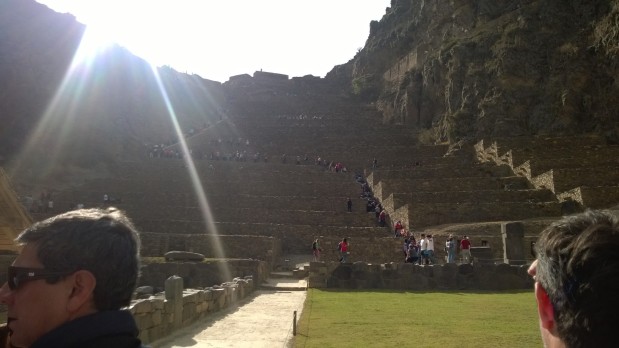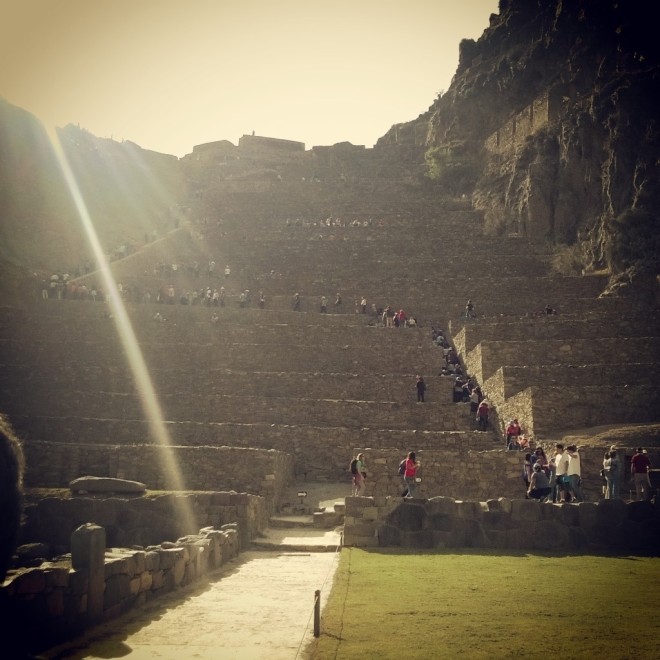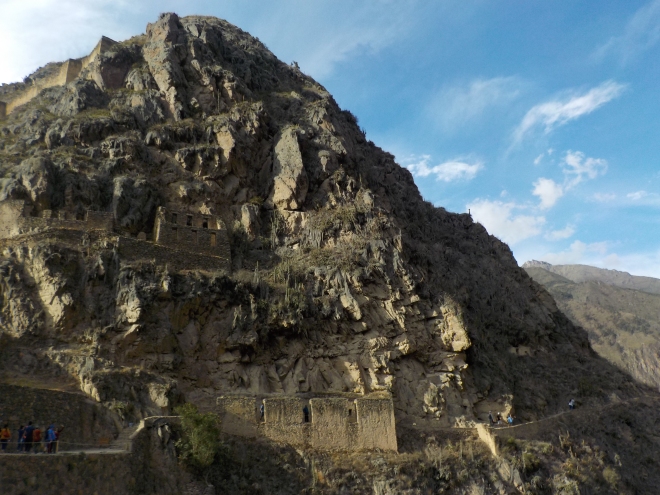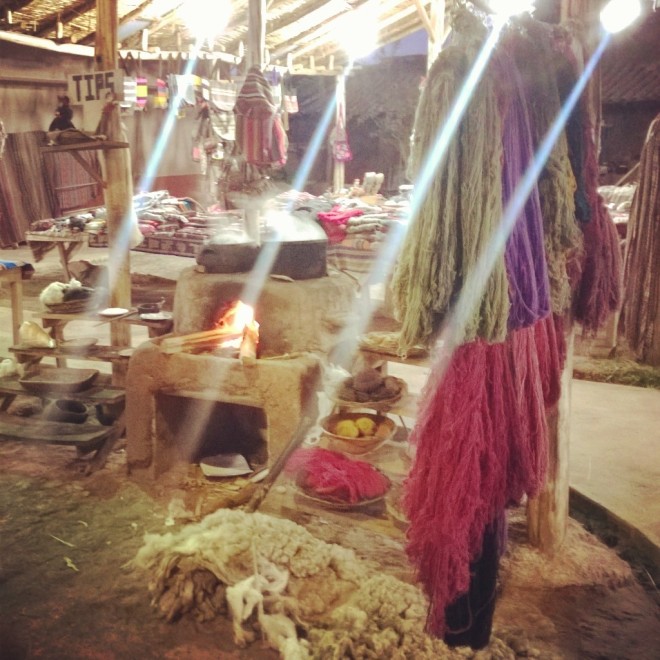After 4 days of adjusting to the altitude sickness, I was finally going on the Inca Trail!
It was the reason why I was there and why my trip was postponed for two months (they only allow 500 people on the trail each day, 200 tourists and 300 porters and guides, so reservations must be made months in advance).

Rio Urubamba
I made some huge mistakes while preparing for the trip as well as during trip. For one, I think it’s necessary to at least work out a little bit before embarking on a 4 days 3 nights hike that can reach as high as 4000 m. Secondly, understand what the trip does and does not include. I paid about $545.00US and the trip had great ratings on Trip Advisor but we also had to carry our own bag, water, sleeping bag and sleeping mattress. I think the weight was anywhere from 12-18 KG. Thirdly, due to the second point, a sturdy backpack is almost essential, otherwise, it is just a lot of pain. Walking sticks, good hiking shoes, as well as toilet paper is a must … Things that you don’t need are excess clothing and any type of toiletries because you really only get to shower on the last night anyways. My 4 day/3 night itinerary was something like this (link), might have even been the same company.

Train returning from Machu Picchu
The morning of my departure, I grabbed my ‘not-made-for-intensive-hiking’ backpack, some clothes, water, and my hiking shoe and waited at the lobby for the guide to pick me up. I left my luggage at the guesthouse because I was going to stay there when I return from the hike.

Good Morning Cuzco (at the guesthouse)
There was only going to be 6 travelers in total but picking them up from all corners of Cuzco meant we were off schedule by almost an hour.
Upon picking up everyone, we were on our way to Ollantaytambo to get breakfast and pick up some small items like a poncho (for the really unpredictable weather) and cocoa leaves (boost of energy perhaps?). I put some cocoa leaves in my water because I don’t like chewing them.
Our van drove us all the way to the 82 KM mark between Cuzco and the closest town to Machu Picchu – Aguas Caliantes. The Inca Trail actually extends from parts of Ecuador all the way down to Chile, so this four day trek only covers 43KM and brings us from Ollantaytambo to Machu Picchu.
The van dropped us off at the parking lot, where we received our sleeping mattress and the sleeping back I rented. I wasn’t told that I was going to carry it myself … perhaps I missed something but I thought I just saw ‘not-included’. My small backpack couldn’t even tie both of them on. At that point, the rain came and I had to make use of the poncho, which I tied on my backpack to protect the rented mattress and sleeping bag from getting wet.
At that point, I think my guide knew … I was going to be a problem.
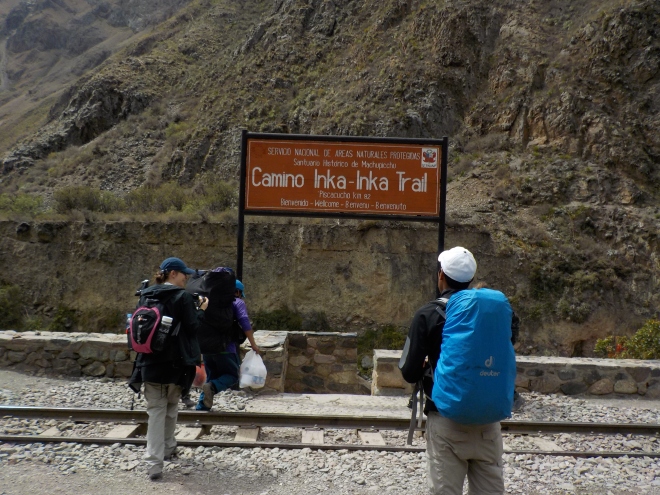
Commemoration photo at the entrance of the Inca Trail. At the same time, a train full of passengers passed by, and for the next couple of days, I wondered why I wasn’t on that …

First check point (across the bridge)
We went through our first check point, where they verified our passports and paper works. When I booked the trip, I used by old passport and I didn’t give my updated passport information to the agency in time. Therefore, I needed to have a copy of my old passport attached to my new one. I didn’t know it until the tour agent told me the day before the trip but luckily I had a copy of it! In any case, we crossed the bridge over the Vilcanota River and we’re on our way …

the trail

a bit of uphill
There wasn’t a lot of Inca Sites on this part of the trail but the view was still spectacular, that is, when I look up from the ground. Some of the hikers in my group were quite seasoned and had no trouble at all. I think the porters were more impressive, they carry almost 20 KG of goods on their back and walk uphill, sometimes just on sandals. The items they carry depends on the group they are with, for us, they carried the pots and pans as well as the tent. They have to get there earlier than us to set up the food and tent so we can get ready to eat. I think other porters in other groups carry water, sleeping bags, etc …

first lunch in a tent

pit stop for drinks
Along they way, we passed by some villages and pit stops where they sold water and other beverages. As we got further from the entrance, the value of water increases. For the most part, I was able to keep up with the group but I was really exhausted and lagged behind near the end. It was then that the guide advised me that I should hire a porter to carry my bags for the next day, which consist of approximately 3 hours of uphill climb, and an ascend of some 1000 meter.

View on day 1 of the Inca Trail
We did see an Inca site though: Patallaqta. It is at the 88KM, so shortly after we start walking. It is located on a foothill facing the Urubamba River. At its height, there could have been as many as 1000 people living here and it also served as the temporary homes for military personnel and travelers. There was also a shrine for ceremonial purposes. It was said that this and many towns along the path to Machu Picchu was burnt so the Spaniards could not pursue the retreating Inca army. As such, most of the sites are preserved.

Patallaqta
The area also has a lot of cactus and the blood of the insect (called cochineal) living on them are often used as natural red dyes for wool (and even lipstick!)

Cactus
The hike continued on fairly even grounds, even a bit of downhill. Overall it wasn’t too bad but I was really glad to be at the campsite near Wayllabama, which was just before the second check point . The porters had done up the tents and everything but our guide decided another place was better so everything was taken down and moved again. The first night was actually the best night. The tent was eventually set up on piece of grassy land with no other hikers but us. We had food under a tent that was lit up by a small lamp and personal flashlights. Apparently, tea and popcorn was what Peruvians enjoyed as afternoon tea and it was served at 5 PM. The dinner came immediately after it. There was no time for showers because there was no shower, only a wooden box with a squat toilet.

close to campsite!
We basically slept at 8 PM that day because there were no other lights besides the moon and stars in the sky. There was certainly no internet or even a signal. We did packed up everything tightly during the tight… and even kept our shoes inside. If in Canada, we had to look out for bears in campsites, in Peru, it was stray dogs .. and they were howling at night (highlight to read).
That night I had to make arrangement with our guide to have one of our porters carry my stuff, it was 100 soles per day. FYI: we were also advised not drink the spring waters, because it can lead to stomach issues. We even brushed our teeth in boiled water.
That was the first day. Day of Travel : November 3, 2015.
Source:













































